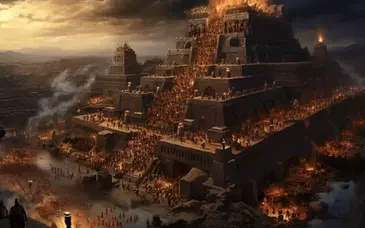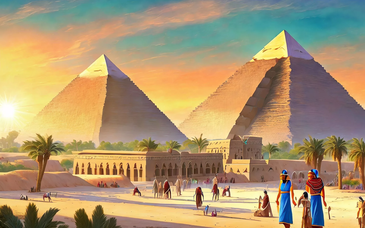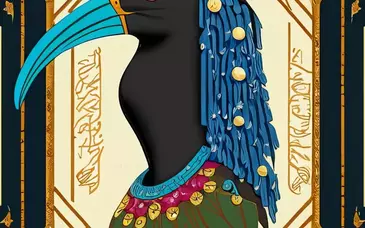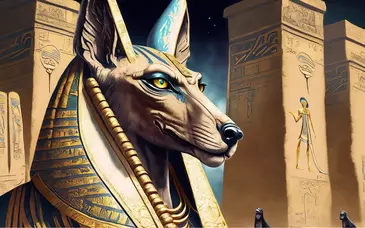
Osiris is perhaps the most famous of the gods of Ancient Egypt. Here he is shown in his typical guise as a mummified pharaoh holding the hook and flail, the traditional symbols of royal authority. Osiris is usually depicted wearing the feathered Atef crown.
Osiris is a common feature in Egyptian funerary art. As the lord of the afterlife he is often shown in coffin art. He also presides over the last judgment of the soul shown in the Book of the Dead.
It was also common for the deceased person to be depicted in the form of Osiris so they could be identified with the god both to ease their passage into the afterlife, and also to serve as a warning that the dead person was under Osiris' protection.
Isis was the sister and wife of Osiris and the mother of the god Horus. This photograph shows Isis in a typical pose nursing the infant Horus.
In some statues of this type the Pharaoh is shown in the place of Horus, often as a miniature fully grown adult complete with the nemes headcloth.
Both these photographs are of figures from the collection of the National Museums of Scotland.

The Myth of Isis and Osiris
As with much of the ancient Egyptian mythology, there are various versions of the story of Isis and Osiris, but basically it runs as follows.......
Osiris was an earthly ruler, who was popular with his subjects. His brother, Set, was jealous of this popularity and plotted against Osiris.
Set's plans to be rid of his brother started when he secretly obtained his brothers measurements and had a magnificent casket made to fit. This casket was in the form of a human shaped box.
Set then organised a large feast to which Osiris and a number of others (usually given as 72) were invited. At the height of the festivities Set produced the casket and announced that it would be given to whoever it fitted. All the guests tried the casket for size, but none fitted until finally Osiris stepped into the casket.
Set immediately slammed the lid closed and sealed the casket shut (with molten lead). The sealed coffin was then thrown into the Nile.
Isis was devastated at the loss of her husband and searched for the casket throughout Egypt and then overseas. She eventually eventually found it where it had come to rest in the roots of a massive tree.
Isis then returned the coffin to Egypt for a proper burial. For safe keeping she concealed it in the marshes beside the Nile.
Unfortunately for Isis Set found the casket while out hunting and was so enraged he chopped the body of Osiris into pieces, and scattered the parts throughout the land of Egypt.
Poor Isis had to then set out again looking for the parts of her husband. Eventually she found all the parts except one and reassembled Osiris and wrapped him in bandages. In some accounts Isis breathed life back into Osiris' body and it was then that Horus was conceived. This was a more magical event that it seems, considering the one part of Osiris Isis couldn't find.
The young Horus then went out to battle his uncle Set and to avenge his fathers death. After a series of fights detailed in 'The contendings of Horus and Set' neither god was able to secure an overall victory. Ultimately Osiris was declared king of the underworld,Horus king of the living, and Set ruler of the deserts as the god of chaos and evil.



